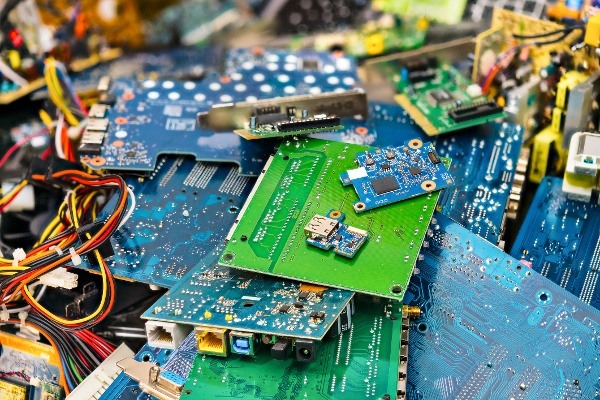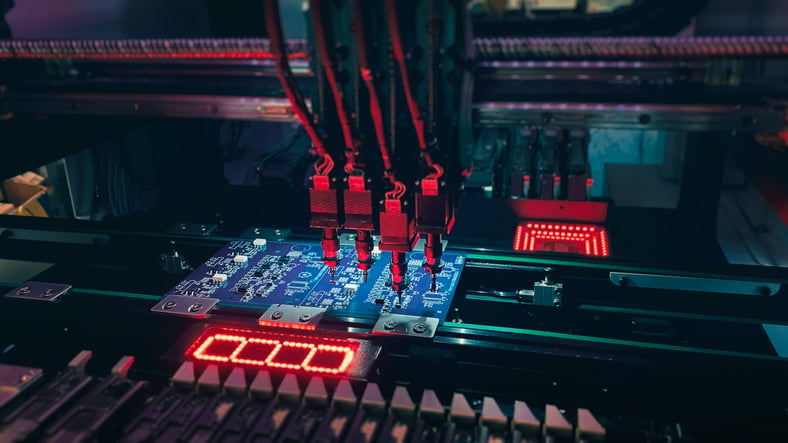PCB Manufacturing Capabilities & Fabrication Plants: A Look Ahead
The world of PCB assembly capabilities is changing rapidly, and forecasters expect PCB manufacturing capabilities to expand for the next 10 years....

Nearly a year after our last update, we have returned to find a similar situation regarding shortages in the component market. The component shortage remains constant, and the theme has been adapting and innovating as demand remains high and the supply low for chips for consumer electronics.
Designs for new products have been shifted as well. So much so, in fact, that engineers and support staff are encouraged to come at designs from a different angle- one that prioritizes component sourcing before problem-solving. This is the new preferred way to circumvent the ongoing supply chain issues.
Higher prices and the difficulty in finding available products both mesh to result in the shift in priority for design staff at various companies. Even more so than in years past, flexibility is encouraged and celebrated in the manufacturing industry.
Also influencing the global chip shortage, the war in Ukraine has impeded the export of neon gas. This, in turn, puts a strain on component manufacturers. The lasers used to cut the minuscule chips require neon gas to perform the task. Back inventory at bigger companies is now a thing of the past, and supply chain shortages remain such a central concern that the turnaround experts hope to see will be mid-2023, if at all.
According to Wired Magazine, demand for semiconductors grew nearly 30% between August 2020 and August 2021, and some companies are seeing a backlog of orders growing well into 2023.
Some major chip manufacturers have announced massive investments to build new and modern chip-manufacturing plants, but that takes years to build and costs billions to accomplish. While some analysts predicted the chip shortage might ease sometime in 2022, those forecasts now appear to be optimistic as international labor shortages, COVID outbreaks, and shipping backlogs have further stressed a market nearing the breaking point.
With multiple industries feeling the impacts of the component shortage, some analysts are predicting relief in sight ... just not until 2023 at the earliest.
The just-in-time build-to-order pipeline model that the electronics supply chain has been utilizing for over two decades wasn't built to handle the sudden rise in demand for consumer electronics at the beginning of the pandemic.
Now, fresh rounds of COVID-related shutdowns overseas, mixed with the increased demand for consumer electronics, and an incredible bottleneck in the shipping industry has many worried we may see fewer products on the shelves during this Christmas season.
Electronic component shortages have been a hindrance on booming electronics marketplaces since 2018. While new orders roll in and production remains steady, there simply haven’t been enough capacitors, resistors, and other parts to go around.
After tariffs were imposed on imported Chinese goods and factories were shut down due to the coronavirus, OEMs raced to understand what was ahead for their already-constrained inventory. But, COVID-19 was not the only culprit -- it's actually exposed pre-existing cracks in the supply chain.
Here's why 2022 is shaping up to be another difficult year:
The COVID-19 pandemic certainly threw everyone for a loop, but electronics manufacturers especially suffered thanks to supply chain disruptions and component shortages.
The pandemic shut down a lot of avenues for raw materials and bulk electronic components, leaving manufacturers with half-finished products and idle capacity. Many components come from supply chains in Asia, and since China was ground zero for the coronavirus, the shortages started to affect U.S. manufacturers before the virus hit American soil.
In an April 2021 report, JJS Manufacturing detailed how the chip shortage is affecting more than just the auto industry. Shortages are now reaching across all manufacturers, industries, and products.
Shortages aren’t the only problem -- so are rising prices. As demand for electronic components rises, the supply dwindles, and costs increase.
Thanks to the U.S. stimulus package, many electronics manufacturers were able to stay on their feet and even begin retooling for the production of much-needed electronics like ventilators or thermometers.
But will it be enough?
From the outset of 2021, the outlook for the electronics manufacturing industry has steadily grown murkier.
Many PCBs, semiconductors, and microchips are still produced in Asia, and with the ongoing supply chain disruptions, some electronics manufacturers are looking at moving their operations back to familiar soil.
But, component shortages persisted in 2021 as many valuable raw materials were in low supply or completely unavailable. 2022 is shaping up to be another long wait.
In Q1 2021, the semiconductor supply chain joined the long list of those facing shortages.
A report from ElectronicsB2B indicated that the semiconductor industry value is set to increase by 11% from 2020 to 2027.
Plagued with increasing demand, semiconductor chip manufacturers are bottlenecked going back many months -- and orders haven't slowed down.
It's becoming evident that the semiconductor shortage is less about the COVID-19 pandemic and more about critical issues in the supply chain infrastructure. The semiconductor industry will face further uncertainty into 2022 due to:
The end game is to simply produce more semiconductors worldwide. For American OEMs, producing more chips domestically reduces lead times and other risks associated with importing.
If COVID-19 has shown us anything, it’s that supply chains are surprisingly volatile. The longer a supply chain is, the more susceptible it is to disruptions, so US electronics manufacturers should start finding suppliers closer to home. This will minimize the risk of expensive delays in production lines and reduce lead times.
Plus, supply chains that are closer to home are less likely to be affected by global disruptions. If there’s a natural disaster in India, chances are it won’t affect your supply chain in Canada.
Reshoring is growing in popularity amongst manufacturers in all industries. There’s a decreased risk of potential cybersecurity risks, and overall transportation costs are lower.
One of the benefits of reshoring component supply chains is punctuality. We all hate it when our Amazon packages are a day late, but just imagine waiting on an order of crucial electronic components for months.
By bringing supply chains closer to home, we can start to fix this problem. Sure, there are still going to be component shortages or blips in the manufacturing process, but supply chains based closer to their manufacturing end-destinations are more likely to deliver products on-time.
So far in 2021, component shortages have not gotten much better. Supply chains are bottlenecked by:
However, you can still put your company in a position to succeed by staying informed and planning accordingly.
Make sure to speak with your supplier to fully understand how electronic shortages are impacting you both. And remember to be patient – everyone is in the same boat, and we’re simply riding out the storm.
In the meantime, take a look at our guide to component sizes!
Editor's Note: This blog post was originally published in September 2018 and was updated in December 2022 to reflect updates in content and insight.

The world of PCB assembly capabilities is changing rapidly, and forecasters expect PCB manufacturing capabilities to expand for the next 10 years....

The electronics manufacturing supply chain ranks #1 as a source of risk to many OEMs. These snags include environmental and other international...

It’s time for your organization to begin production of a new electronic device. For one reason or another, you’re in no position to take care of the...